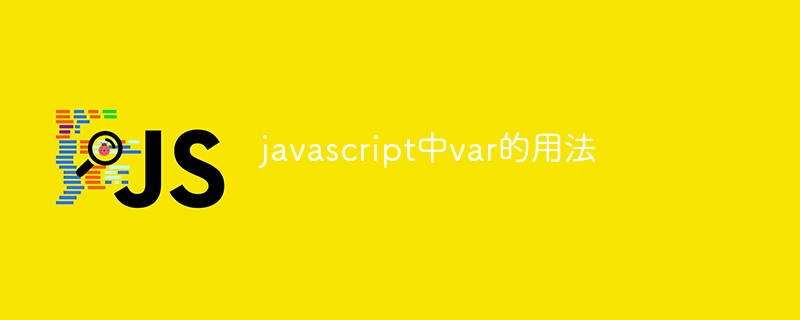Home >Web Front-end >JS Tutorial >How to use var in javascript
How to use var in javascript
- 下次还敢Original
- 2024-05-08 21:45:29984browse
Use var to define variables in JavaScript: The var keyword declares variables and can assign values. Has function scope, giving access to created functions and all embedded functions. Redeclaration and reassignment are allowed. There is variable hoisting, where declarations are hoisted to the top of the scope. It is recommended to declare variables using let and const for tighter scope and to prevent unexpected behavior.

var usage in JavaScript
var defines variables
The var keyword is used to declare variables in JavaScript. It allows you to create variables and assign values to them.
Syntax:
<code class="js">var variableName = value;</code>
variableName is the name of the variable you wish to create. value is the value you want to assign to the variable.
Features:
-
#varDeclared variables have function scope, which means they are within the function in which they are declared as well as the Function nesting is accessible within all functions. -
varAllows redeclaration and reallocation. -
varThere is variable hoisting, which means that the declaration of a variable is hoisted to the top of its scope.
Example:
<code class="js">var name = "John"; // 声明并分配一个字符串值 var age = 30; // 声明并分配一个数字值</code>
Redeclaration and reassignment:
<code class="js">var name = "John"; // 声明并分配一个字符串值 name = "Jane"; // 重新分配 name 变量</code>
Variable promotion:
<code class="js">// 变量提升到函数顶部 console.log(name); // 输出 undefined var name = "John";</code>
Recommendation:
Although var is still supported, it is recommended to use let and const to declare variables because they provide stricter scoping and protection against accidental redeclaration and reallocation.
The above is the detailed content of How to use var in javascript. For more information, please follow other related articles on the PHP Chinese website!

